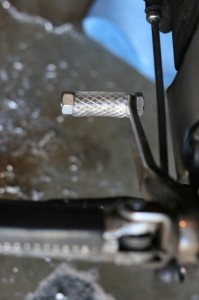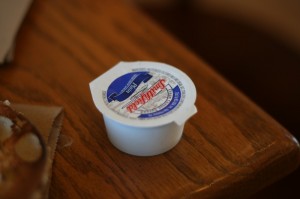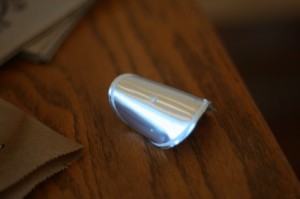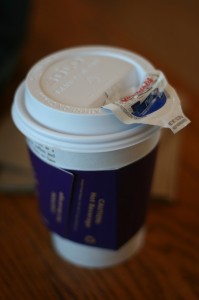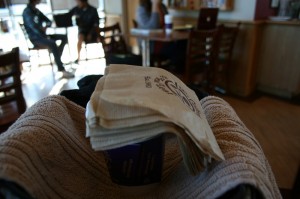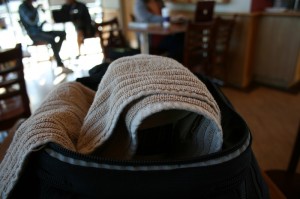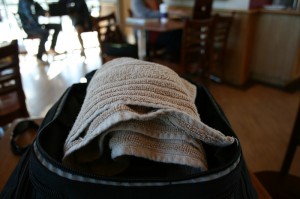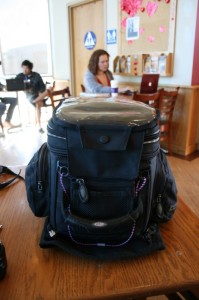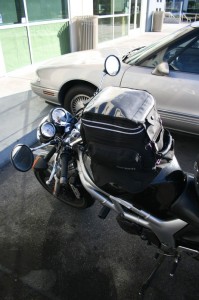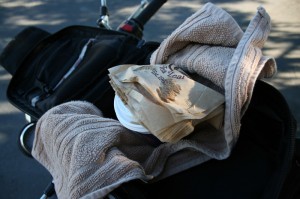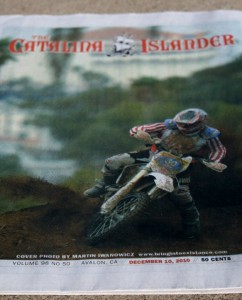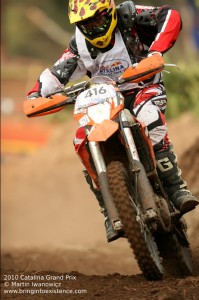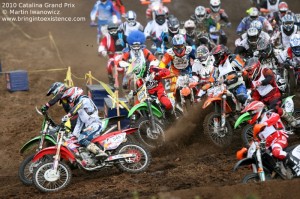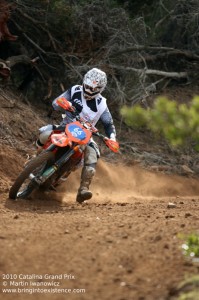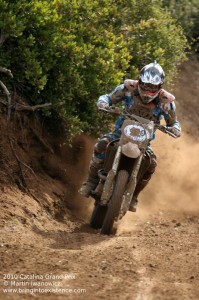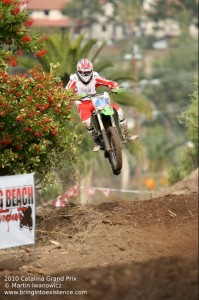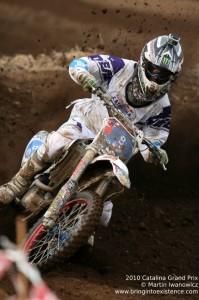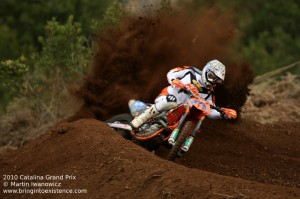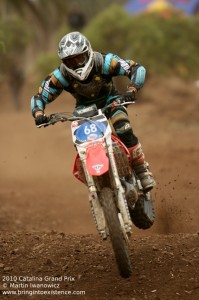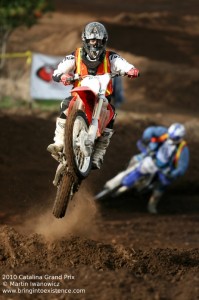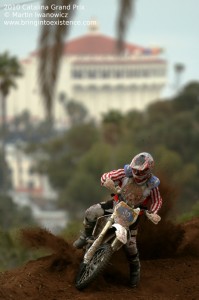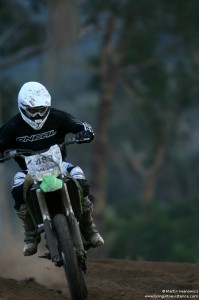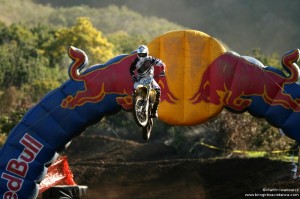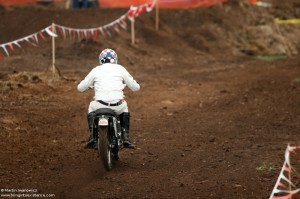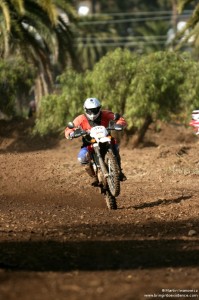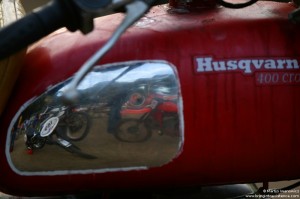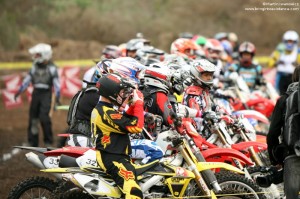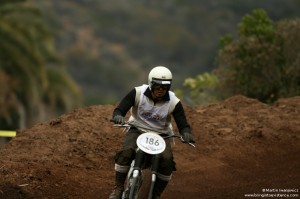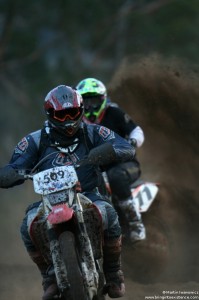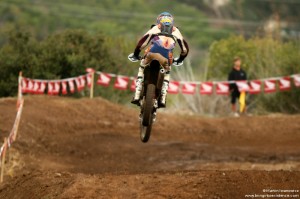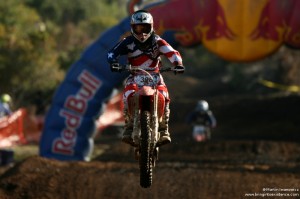My friend John recently asked me to give him some advice about preparing for a long day trip he has coming up. I figured this is a really good place to start before I get into the deeper aspects of touring. Long day trips are unique in that they provide potential for many of the common challenges of full-blown touring, but with much less luggage. Often times you’re either returning back to home base, or you’re simply moving your bike from one place to another – either way you don’t have to bring along a change of clothes.
There are a few key aspects to any long day ride, whether it be part of a longer touring trip or just a long day ride:
- Changing weather conditions
- Sore body parts, general uncomfortability
- Bike maintenance
- Place for a small amount of luggage and/or goods you might purchase along the way
I think those are the four main points of a longer ride. Let’s look at each one in detail.
Changing weather conditions
The weather can change pretty quickly when you cover 100 miles on a bike, let alone 500 or more. Most anyone that’s ridden around in light summer gear can tell you that dipping into a cove or dense forest can have huge impacts on the ambient temperature, and subsequently your comfort level. For me the #1 concern while riding is my comfort level. I think this is so important for both enjoying the ride and completing it safely. For that reason whenever I do a long ride I spend good deal of focus thinking about what I’m going to wear, particularly in relation to the areas I’ll be riding in, the time of day I’ll be there, and the season. I also check the weather forecast for both my departing location and my arrival destination, and pay close attention not to what the weather will be like at those places throughout the day, but specifically to what the weather will be like when I plan on being in that area. For longer rides it’s also a good idea to check one or two locations along the way. Also consider that high altitudes (such as mountain passes) can have drastically different weather than the lower land around them. One example is my ride between Denver and Grand Junction, Colorado. It is about a 250 mile ride, and on this particular ride it was sunny and warm in both Denver and Grand Junction, but snowing and well below freezing for probably half the ride. Of course, this is the quintessential mountain-pass highway, including the highest elevation point of the entire Eisenhower Interstate System, but I am mentioning it simply to illustrate that even on a relatively short ride of 250 miles I experienced drastically different weather in the middle of the ride, while the weather at the end points was very similar.
The main point of this is that in my opinion it’s very important to carry layers and have proper touring gear. For touring I prefer textile gear that is marketed as waterproof, and still carry “waterproof” rain gear. I use frogg toggs for my rain gear, specifically this set (I got mine in stone/black coloring): Frogg Toggs Leep Frogg Rainsuit . I find they work really well, however; there are certain conditions where it seems that getting wet is unavoidable. My touring gear is claimed to be fully waterproof, and in addition to that I wear my Frogg Toggs in the rain, which is also claimed to be fully waterproof, but it seems nothing works perfectly in this regard. There are a few main factors to determining how well the gear will work:
. I find they work really well, however; there are certain conditions where it seems that getting wet is unavoidable. My touring gear is claimed to be fully waterproof, and in addition to that I wear my Frogg Toggs in the rain, which is also claimed to be fully waterproof, but it seems nothing works perfectly in this regard. There are a few main factors to determining how well the gear will work:
- How hard it’s raining (this one should be obvious)
- How long you ride in the rain for (particularly for heavy rain)
- How fast you’re going
- How heavy the traffic is, and particularly how close you follow said traffic, and if it’s a large truck or a small car
If you’re riding in heavy rain in 70mph traffic with lots of large trucks for a few hours, you will get wet. At that point having the rain gear and many layers is more about maintaining body heat than staying dry. It will act a lot like a wet suit – you will get wet, but the water that soaks into your gear will stay put, for the most part, so you will stay warm. If you’re riding in a light rain with practically no traffic, you could probably ride all day and not get particularly wet. You could probably ride ten miles in a monsoon and be mostly dry when all’s said and done.
The final thing in this category is temperature. I love layers for this reason. My touring gear is an older Joe Rocket Ballistic Series Jacket) and my Tour Master Quest Pants
Jacket) and my Tour Master Quest Pants (actually, I have Tour Master “Jean” pants, but it looks like they’ve been renamed to “Quest”). I am very happy with both items from a comfort standpoint while riding. The jacket and pants are certainly not the most protective gear available, but luckily I haven’t really had to test that out yet. Ultimately textile gear is rarely (if ever) as protective as leather riding gear, but the flip side is that it’s much better touring gear. I do have a full set of leather gear (an Alpinestars MX-1 Leather Jacket
(actually, I have Tour Master “Jean” pants, but it looks like they’ve been renamed to “Quest”). I am very happy with both items from a comfort standpoint while riding. The jacket and pants are certainly not the most protective gear available, but luckily I haven’t really had to test that out yet. Ultimately textile gear is rarely (if ever) as protective as leather riding gear, but the flip side is that it’s much better touring gear. I do have a full set of leather gear (an Alpinestars MX-1 Leather Jacket and Alpinestars Apex Leather Pants
and Alpinestars Apex Leather Pants , for your reference) for my shorter, warmer, more “spirited” rides, but I wouldn’t want to do more than a day trip in them. Not because the leather gear is uncomfortable, but rather it’s not as versatile. It doesn’t block the wind as well, and it’s certainly not waterproof… but, once again, the up side is that it’s more protective. I can attest first-hand that the jacket does a fantastic job preventing road rash.
, for your reference) for my shorter, warmer, more “spirited” rides, but I wouldn’t want to do more than a day trip in them. Not because the leather gear is uncomfortable, but rather it’s not as versatile. It doesn’t block the wind as well, and it’s certainly not waterproof… but, once again, the up side is that it’s more protective. I can attest first-hand that the jacket does a fantastic job preventing road rash.
Anyways, on any longer ride I also always wear a back protector. My choice was to go with the Joe Rocket Speedmaster back protector, which is a re-branded version of the TPro Force Field back protector (as far as I know they’re essentially identical – Joe Rocket just gets the US market) based on reviews I read that suggested it is the most comfortable dedicated back protector on the market. Once I’m on the bike and riding, I don’t even notice it’s there. The philosophy on this subject goes such that you don’t wear protective gear if it’s uncomfortable, so you should always buy comfortable protective gear.
back protector, which is a re-branded version of the TPro Force Field back protector (as far as I know they’re essentially identical – Joe Rocket just gets the US market) based on reviews I read that suggested it is the most comfortable dedicated back protector on the market. Once I’m on the bike and riding, I don’t even notice it’s there. The philosophy on this subject goes such that you don’t wear protective gear if it’s uncomfortable, so you should always buy comfortable protective gear.
I’m actually digressing here, and a lot of this information really belongs in a discussion on protective gear, so to get back to the topic:
For long rides that could involve cold weather, my base layers are:
- Duofold t-shirt (http://www.duofold.com/)
- Guide Series Extreme anti-microbial sweater I picked up at Gander Mountain a few years back (as a side note, this is one of my favorite pieces of “performance” clothing, and I can’t find it online at the moment. It would be a shame if it was discontinued)
- The North Face Apex Series Jacket

- And my Under Armour Base 3.0 Leggings
 (also available in Womens
(also available in Womens )
)
- I also have a cashmere sweater which is definitely worthy of mentioning. Cashmere isn’t often thought of as a “high performance” piece of clothing, but the fact is that it is wool. Wool is one of the best performing fibers, and Cashmere is extremely soft, and definitely not itchy, so it makes a great base layer, or layer just over the base layer. Also Cashmere sweaters tend to be relatively thin, so they’re not bulky and obtrusive, yet add a lot of thermal insulation.
As a side note, I have not tried the Base 3.0 Top , but I have been planning on picking up a set at some point. Also available in Womens
, but I have been planning on picking up a set at some point. Also available in Womens of course.
of course.
Ok, that covers most of the comfort category as well, but let’s look at a few specifics concerning…
Sore body parts and overall comfort
I think this is really the ultimate goal of what I just wrote about – being comfortable in adverse weather conditions. However this category I want to address other issues of riding a motorcycle, things like a sore butt, stiff neck, or painful muscles. My shoulders in particular tend to get painful on long rides, and unfortunately I haven’t found a great solution to this. I don’t carry around a personal masseuse (though I might consider it) so there isn’t much to do for this besides pain killing drugs (such as Ibuprofen or Aspirin). The stiff neck I mention is a result of the aerodynamic force on your head related to cruising down the highway. Not much you can do about this besides riding a bike with a windshield.
Finally – and this is the one you can actually do something about – is the sore butt. I carry around some Anti Monkey Butt Powder which is basically the same stuff as Gold Bond Foot Powder, but without the “omg it burns” feeling on your tender areas. Even more basically, I think the stuff is just moisture absorbing baby powder, which I really think is just talcum powder… but I could be wrong, I don’t really know. Anyways, it comes in handy for when you have issues chaffing, which can happen. A lot of my chaffed-ass problems were eliminated with one very important discovery: The Corbin seat. People always ask me if my ass is sore after a long ride, and honestly since I got this seat, the answer is “no.” Before I rode with a Corbin seat, 100 miles would make my ass hate it’s life, with the Corbin I’ve done over 550 in a day (sometimes in the rain) and not had a single problem. There’s not much more to say about it; It’s awesome, and it’s the best range extender I’ve ever had.
which is basically the same stuff as Gold Bond Foot Powder, but without the “omg it burns” feeling on your tender areas. Even more basically, I think the stuff is just moisture absorbing baby powder, which I really think is just talcum powder… but I could be wrong, I don’t really know. Anyways, it comes in handy for when you have issues chaffing, which can happen. A lot of my chaffed-ass problems were eliminated with one very important discovery: The Corbin seat. People always ask me if my ass is sore after a long ride, and honestly since I got this seat, the answer is “no.” Before I rode with a Corbin seat, 100 miles would make my ass hate it’s life, with the Corbin I’ve done over 550 in a day (sometimes in the rain) and not had a single problem. There’s not much more to say about it; It’s awesome, and it’s the best range extender I’ve ever had.
As a final note in this category, heated hand grips are basically the best thing ever. I use Symtec grips which I ordered from California Sport Touring and they’re pretty much awesome. Having heat pumped into your hands does more than keep your hands warm, it affects your whole body, and it can take a very unpleasant ride and make it bearable, if not comfortable. When you’re all bundled up in all your layers, often times your hands are one of the big places for heat to escape, and actively putting heat into your body at that point helps more than most would think.
Bike Maintenance
Motorcycles aren’t quite like cars in many respects, but this one in particular stands out: They generally require more maintenance, specifically the drive chain. This is actually the main point of this entire category: Oiling and checking the tension on your chain (and adjust if necessary) is very critical for longevity. The general recommendation is to oil the chain every 300 miles. I check the tension every time I oil it. I also can feel if it’s loose – the bike becomes very jerky for on/off throttle, and if the chain is very loose, it will also make more noise. Other things involve cleaning the air filter before your ride and changing the engine oil as necessary. As a final note, there is the general observation that a clean bike is a reliable bike.
Luggage
I’m not talking a big set of saddle bags the way you have on a touring trip, or the waterproof duffel that you might jam your laptop into for your ultra long rides. No, simply put: a small bag to stuff excess layers into or hold your rain gear, as well as other little things you might want along the way: Your wallet (if you don’t carry it on your person. I personally find it uncomfortable to carry it on my person for longer trips), a camera, food or drinks, rain gear, maps… pretty much any thing you might want for a day trip of any sort. I have the magnetic version of this Cortech Tank Bag and I couldn’t be happier with it. I also only have the bottom section of the bag as pictured in that link, and it’s basically the perfect piece of luggage to hold all my essentials or quick-access items for both my shorter trips, and my long touring trips. This is the single best piece of luggage I have (although an argument could be made that the dry bag is worth its weight in gold).
and I couldn’t be happier with it. I also only have the bottom section of the bag as pictured in that link, and it’s basically the perfect piece of luggage to hold all my essentials or quick-access items for both my shorter trips, and my long touring trips. This is the single best piece of luggage I have (although an argument could be made that the dry bag is worth its weight in gold).
That basically covers most of the main points of doing a longer day trip. It’s a lot like any other ride, you just need to be a little bit more prepared for changing weather conditions or differing roads. Your first long ride WILL make you uncomfortable, but sometimes you just gotta get down and do it! Before I did any touring my longest rides were only about 150 miles. Now I wouldn’t think twice about riding 300miles in a day, and 600 if I didn’t plan on stopping along the way.
I still have yet to go for my iron butt certification though (1,000+ miles in a day).
